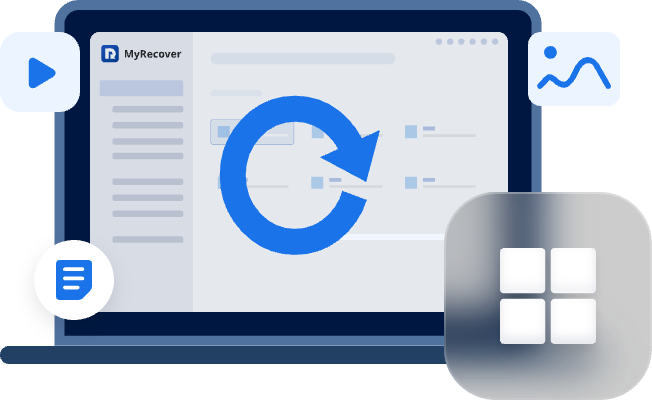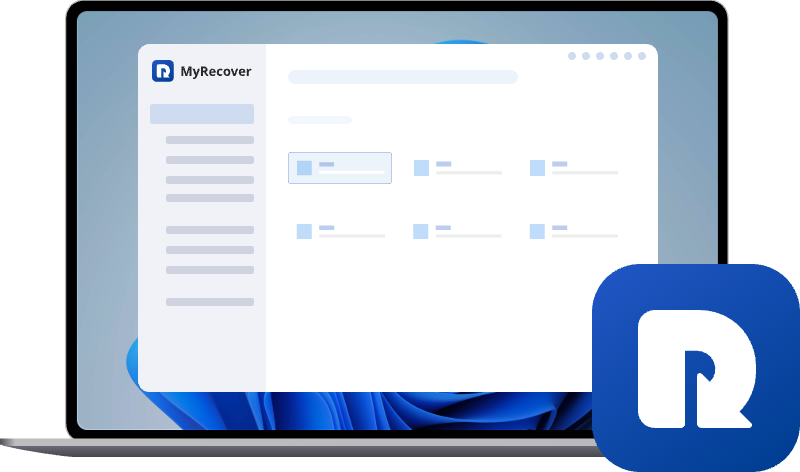How to Recover Deleted Files from Recycle Bin, SD Card, Thumb Drive & More
In this guide, you will learn how to recover deleted files using effective methods for various devices in different scenarios. Whether it's deleted from the recycle bin, SD card, or thumb drive, you can restore them quickly and completely!
Brief Overview of Data Deletion or Loss Scenarios
Data loss is a common issue that can happen unexpectedly, and it often leads to frustration or even panic when important files seem to disappear. Understanding the different scenarios in which data loss occurs can help you better prepare and respond if it happens to you.
1. Accidental Deletion
One of the most common causes of data loss is accidentally deleting files. This can happen when you unintentionally select the wrong file and press the delete button.
2. File Corruption
Files can become corrupted due to various factors, such as improper ejection of storage devices, power outages, software malfunctions, or viruses.
3. Hardware Failure
Hardware failures are another major cause of data loss. Hard drives, SD cards, and thumb drives are prone to physical damage or malfunctions.
4. Formatting of Storage Devices
If a storage device, like a USB thumb drive or SD card, is accidentally formatted, all data stored on it may seem to disappear.
5. Virus or Malware Attacks
Malware or viruses can damage or delete files on your device. In some cases, these malicious programs can hide your files, making it seem like they've been deleted when they are just invisible.
6. SD Card and Thumb Drive Removal
Improperly removing an SD card or thumb drive can cause file loss. For example, pulling out the device without safely ejecting it can lead to corruption or incomplete file transfer, resulting in data loss or file errors.
Importance of Learning How to Recover Deleted Files
Those above scenarios highlight the importance of regularly backing up your files and being aware of how to recover deleted or lost data. Whether you're a casual user, a student, or a business professional, knowing how to retrieve lost data can save you time, money, and stress.
1. Prevent Permanent Data Loss: Quick recovery can prevent permanent loss of accidentally deleted files.
2. Minimize Productivity Loss: File recovery ensures minimal disruption to work and business tasks.
3. Preserve Important Personal Data: Recovering deleted files helps save valuable personal data like photos and videos.
4. Prepare for Future Losses: Learning recovery techniques prepares you for future data loss scenarios.
The ability to recover deleted files is more than just a safety net—it's an essential skill for everyone who relies on digital storage. By learning how to recover deleted files, you take control of your data and ensure that nothing is truly lost, even in the face of unexpected challenges.
How to Recover Deleted Files in Windows [Common Scenarios Covered]
Accidentally deleting important files on your Windows system can be a frustrating experience. Whether it’s a document, photo, or even a crucial system file, the good news is that there are ways to recover deleted files in most scenarios. Below are some common situations where files are deleted, and how you can recover them.
Scenario 1: How to Recover Deleted Files from the Recycle Bin
The first place to check when you’ve accidentally deleted a file is the Recycle Bin. Files that are deleted in Windows are typically sent to the Recycle Bin, which acts as a temporary storage before permanent deletion.
Step 1: Double-click the "Recycle Bin" icon on your desktop.
Step 2: Find the deleted file you want to recover.
Step 3: Right-click on the file and select "Restore". This will return the file to its original location.
If you’ve already emptied the Recycle Bin, don’t worry. There are still methods to try and recover the files.
Scenario 2: How to Recover Files After Emptying the Recycle Bin
If you’ve emptied the Recycle Bin by mistake, the files won’t be immediately gone. They may still be recoverable using file recovery software like MyRecover. It can recover deleted data or formatted data from any internal or external device like hard disk drive, solid state drive, flash drive, thumb drive, SD card and more.
- Note:✎...
- If you are trying to recover deleted data from SD card or thumb drive, please first connect it to your Windows computer and make sure it is detected successfully.
Step 1: Download and install MyRecover.
Step 2: Launch the recovery software, select the drive where the files were locatedand click on "Scan".
Step 3: Let the software scan for deleted files. When it completes,you can choose the ones you wish to recover.
Step 4: Choose a folder to save the files you will restore later.
Step 5. Once done, you can receive the pop-out window saying "xx files have been recovered successfully".
Scenario 3: How to Recover Files from Formatted Drives
If you’ve accidentally formatted a drive (hard drive, SD card, or USB drive), it may seem like the data is lost forever. However, formatting doesn’t immediately erase the data—it just makes it invisible to the operating system.In this case, you can also use MyRecover to get back the formatted data by the above steps.
Scenario 4: How to Recover Files from a Corrupted or Damaged Hard Drive
If your hard drive is corrupted, accessing deleted files can be difficult. There are a few ways to recover data:
Method 1: Run "CHKDSK"
CHKDSK (Check Disk) is a built-in tool in Windows that helps scan and repair file system errors on a hard drive or storage device. It can fix issues like corrupted files, bad sectors, and disk errors that might prevent you from accessing or recovering data.
Search Command Prompt in the Start Menu and run it as an adminitrator. In the command prompt window, type the following command and press Enter.
chkdsk g: /f /r
- Replace g: with the drive letter you want to scan (for example, c: for another drive).
- The /f flag tells CHKDSK to fix any errors it finds.
- The /r flag tells CHKDSK to locate bad sectors and recover readable data.
Method 2: Use MyRecover
If the above CHKDSK command fails to recover deleted files in Windows 11 or Windows 10, MyRecover might be your better choice. User-frienldy interface and easy-to-follow instruction make it easier to restore lost data from corrupted drive.
Method 3. Take It to a Data Recovery Professional
When a hard drive or storage device is physically damaged, it becomes significantly more difficult—if not impossible—to recover data using standard software or tools like CHKDSK. Physical damage can range from issues like a damaged read/write head, a scratched or malfunctioning disk surface, to electronic failures that prevent the drive from powering on.
In these cases, take it to data recovery professional with specialized equipment, technical expertise, and cleanroom environments.
Final Thoughts
While losing important files can be stressful, there are plenty of options available to recover deleted files in Windows. Whether it's through the Recycle Bin, recovery software, or built-in tools, you can often restore your files and minimize the damage. The key is to act quickly before new data overwrites the deleted files.


